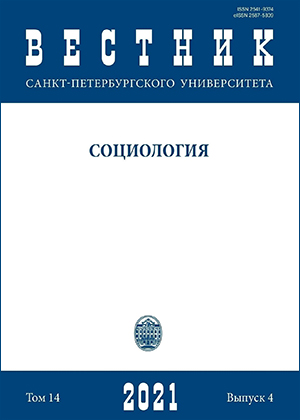Perception of fairness in pay by academic and teaching staff
DOI:
https://doi.org/10.21638/spbu12.2021.401Abstract
Equity is defined as a correlation between a person’s merits and their remuneration. This article deals with social and labor equity, regarding it as a subjective assessment of the ratio of wages to employees’ physical and/or intellectual effort. The article aims to determine the subjective assessment of academic and teaching staff pay equity. An empirical study of the semi-formalized expert research method was carried out with 86 academic and teaching staff of four Russian universities. A series of expert interviews was conducted in 2019–2020. For the analysis, we relied on material and non-material factors of subjective assessment of wage fairness. The results show that half of the informants consider the balance of labor and effort to be fair. At the same time, they call their work quite laborious. Remuneration for research and teaching staff consists of educational and research activities. The second part is not guaranteed and is usually large income from educational activities. This level of fairness of payment is influenced by a competent system of incentives for university academic and teaching staff. An unfair level of remuneration compels competitive personnel to move to the real sector of the economy or academic markets of other countries. For younger (under 30) and non-graduated employees, the assessment of wages as unfair is characteristic. These people have a high classroom load and supporting roles in scientific projects. In addition to material factors on the subjective assessment of equity are non-material factors (free schedule, comfortable working conditions, management support, interest in work, involvement in scientific research and selfrealization). Intangible factors contribute to the consolidation of academic and teaching staff in the academic field. Fairness of pay is influenced by a transparent pay system and trust in the employer. The assessment of the fairness of the payment is stable, so it needs to be done regularly to prevent the edification of team dissatisfaction.
Keywords:
equity, assessment of equity, pay equity, academic and teaching staff, higher education, higher educational institution
Downloads
References
References
Downloads
Published
How to Cite
Issue
Section
License
Articles of "Vestnik of Saint Petersburg University. Sociology" are open access distributed under the terms of the License Agreement with Saint Petersburg State University, which permits to the authors unrestricted distribution and self-archiving free of charge.




